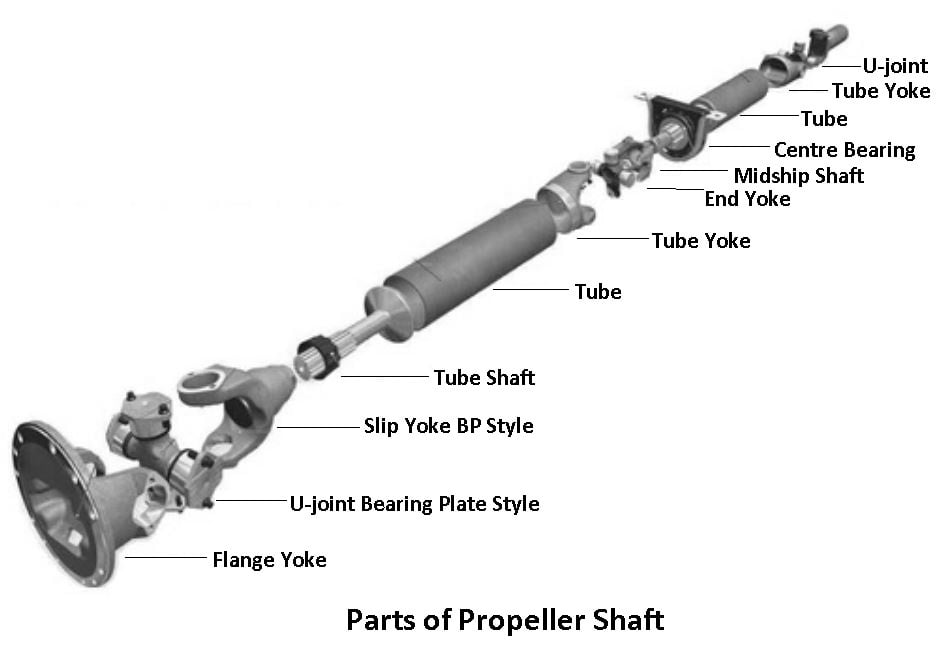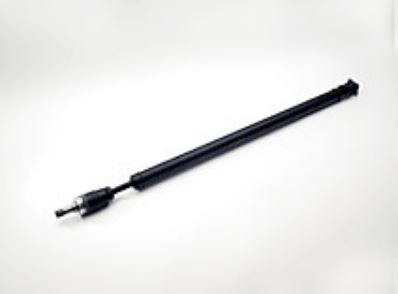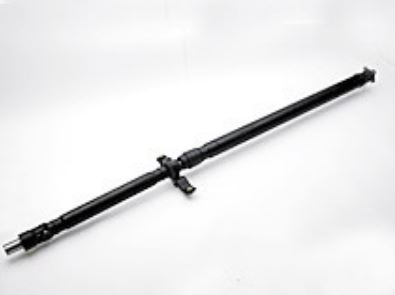In this article, you’ll learn what is propeller shaft? How does it work? its parts, types, working, and more.
Also, you can download the PDF file at the end of this article.
What is Propeller Shaft?
The propeller shaft is a component that transmits mechanical power, torque, and rotation. These shafts as also known as driveshafts, driving shafts, tail shafts, or Cardan shafts.
The driveshaft is used to transfer torque between components that cannot be connected directly because of distance or the need to allow relative motion between them.
As torque is carried by the driveshaft, it is subjected to torsion or shear stress. So they should be strong enough to bear the stress while avoiding too much extra weight as this will increase their inertia.
Driveshafts are used differently in different vehicles, with different configurations for front-wheel drive, four-wheel drive, and front-engine rear-wheel drive in cars. The driveshafts are also used in vehicles like motorcycles, locomotives, and marine ships.
Read Also: What is a Universal Joint? Parts, Types, & Uses.
Parts of Propeller Shaft
The following are the main parts of the propeller shaft:
- U-joint
- Tube
- Centre bearing
- Midship shaft
- End yoke
- Slip yoke and Tube yoke
- Flanges

#1 U-joint
A universal joint (U-joint) is a mechanical joint used to connect rotating shafts. Nowadays, the driveshaft and universal joints are mostly seen in rear-wheel drive and four-wheel drive vehicles.
#2 Tube
A tube is part of a drive shaft, It is often used in front engine and rear drive automobiles. The purpose of using a tube is to keep the rear end in place during acceleration and braking.
#3 Center Bearing
The center bearing connects the two sections of the drive shaft. These bearings are meant to keep both driveshaft parts solid to reduce harmonic vibrations when the vehicle is accelerating.
#4 Midship Shaft
Midship shafts are the basic components of a coupling shaft and are part of a drive shaft that is attached to the frame on a center bearing.
#5 End Yoke
An end yoke is used for accuracy and durability. The benefit of using an end yoke is to help reduce noise and vibration to keep your driveline running easily.
#6 Slip Yoke and Tube Yoke
A slip yoke is attached to the driveshaft itself using a universal joint. The slip yoke is fitted to transfer power by sliding in and out of the transfer case. The tube yoke is also necessary for the U-joints to rotate well with the drive shaft.
7. Flanges
Flanges are used for automotive purposes to connect the driveshaft to the transmission, transfer case, and differential. The flanges are also used to connect driveshafts to power take-offs, hydraulic pumps, and various accessories.
Functions of the Propeller Shaft
In vehicles, the engine is at the front then the front wheels of the vehicle are being driven. Whereas in some vehicles, the engine is at the rear, then the rear wheels are driving. To do this, a small propeller shaft is used to drive each wheel.
With the help of flexible mountings or bearings, the engine and transmission units are attached to the vehicle’s frame. At the same time, the rear axle, along with the differential and wheels, are attached to the vehicle frame by a suspension spring.
If we look at the above arrangement, the transmission output and input shaft in the rear axle housing are in different planes. This forces the propeller shaft that connects these two shafts to keep them inclined.
In addition, when the rear wheels meet unevenness in the road, the rear axle moves up and down, compressing and expanding in the suspension springs. As a result, the angle between the transmission output shaft and the propeller shaft changes.
Also, the length occupied by the propeller shaft changes. This variation occurs due to the propeller shaft and rear axle rotating on arcs along with the points of their axes of rotation.
You might like: What is Electric Power Steering? Parts, Types, Working
Material Used In Propeller Shaft
The propeller shaft is made of hardened steel in tabular form. The center bearing is mounted between the two propeller shafts. The propeller shaft is made of alloy steel. They are also available in spring steel material.
Types of Propeller Shafts
Following are the types of the propeller shaft:
- Single piece type
- Two or three-piece type
#1 Single Piece type

This shaft is used in vehicles with a small distance between the engine and axle and in four-wheel-drive vehicles. Friction welding is applied in order to increase the strength, quality, and durability of the shaft.
#2 Two or Three Piece type

Two or three-piece shafts are used as part of vehicles with a long distance between engine and axle, and four-wheel-drive vehicles. Splitting the propeller shaft into two or three parts reduces the number of revolutions.
Conditions of Propeller Shaft
To achieve efficient functions, the propeller shaft requires the following:
- High torsional Strength
- Toughened and hardened
- Efficiently combined
- Dynamically balanced
- Low thrust load
1. High Torsional Strength
They need to be made of a solid or hollow spherical cross-section in order to obtain high torsional strength during working.
2. Toughened and Hardened
Hard and rigid materials are usually required to make these. Therefore, they are made of excellent quality steel and are induction hardened.
3. Efficiently Combined
They need to be connected very firmly when they are in operation. Therefore, they are usually welded with the help of a submerged carbon dioxide welding process.
4. Dynamically Balanced
Since the rotation factor can be important at high speeds, the propeller shaft is tested on an electronic balancing machine.
5. Low Thrust Load
Since the resonance is bad for the shaft’s life. To avoid this phenomenon, they transmit excessive dynamic force to the end support of the shaft.
Conclusion
As you understand, the propeller shaft is an essential part of the drive axle. It gives rotational torque from the gearbox and engine to the drive axle while allowing relative motion between the gearbox and the drive axle.
I hope I have covered everything about Drive Shaft, like parts, types, and functions. If still, I missed something, or if you have any doubts, let me know in the comments.
If you liked this article, please share it with your friends. Subscribe to our newsletter to get notifications when we upload the latest posts.
Download the PDF file of this article
Read more about the interesting topic on Automobile Engineering in our blog:
- What is Connecting Rod? Its Parts, Types, Functions, Uses, and More
- Flywheel: Parts, Functions, Types, Uses, and More
- Crankshaft: Parts, Types, Function, Uses, with [PDF]
FAQ
In order to achieve efficient functions, the propeller shaft needs: High torsional Strength, Toughened and hardened, Efficiently combined, Dynamically balanced, and Low thrust load.
The propeller shaft is usually made of high-quality steel. Due to its high specific strength and high specific modulus, advanced composite materials like Epoxy composite, Carbon fibers, Kevlar, Glass fibers, and thermoplastic polyamide, etc.
Nice article
Thanks.
What are some of the faults of the propeller shaft
Possible faults of propeller shaft: misalignment, imbalance, wear and tear, corrosion, and fatigue.
I enjoy learning about engineering
Great to hear you enjoy engineering!
Wonderful information
Glad you liked it :). Thanks for reading.